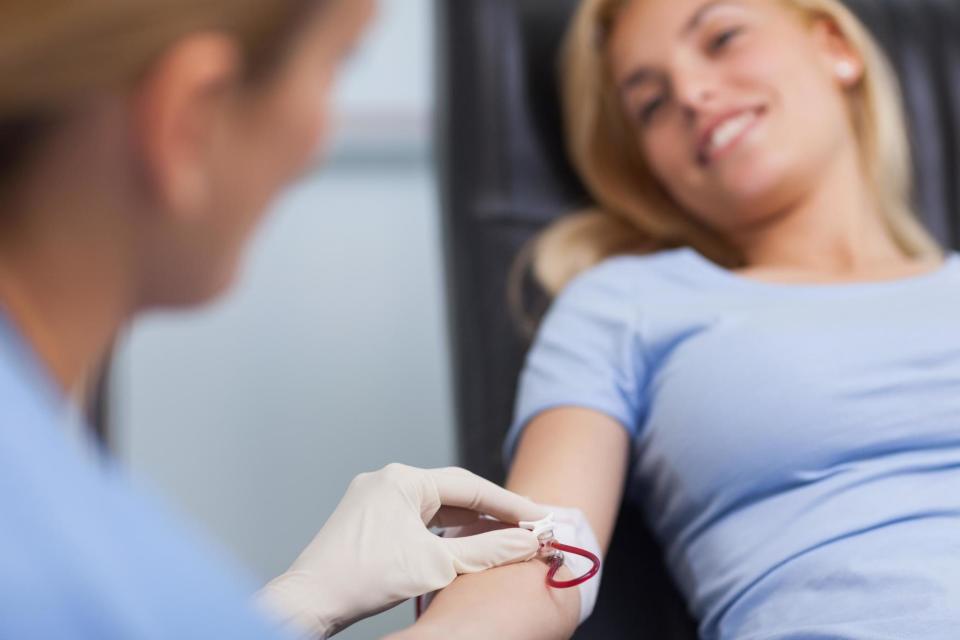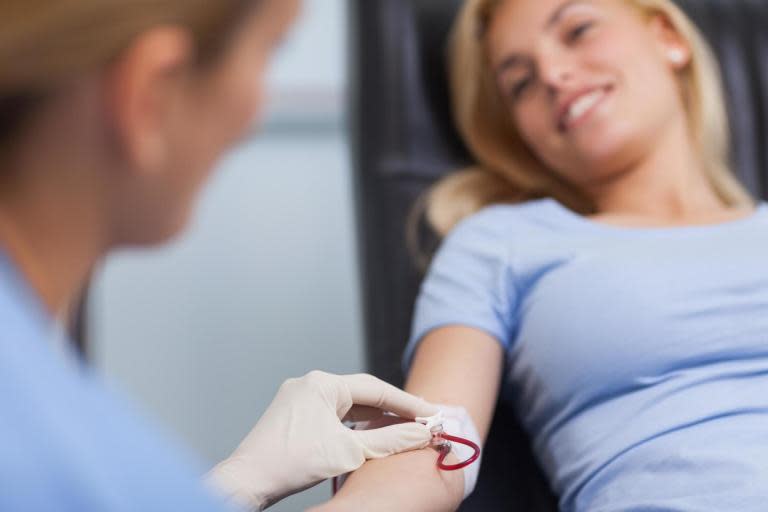Young female blood donors at higher risk of iron deficiency
Adolescent female blood donors are more likely to develop an iron deficiency compared to older donors and non-donors, new research has found.
This means they might be at a higher risk of fainting and feeling unwell after donating blood, but the researchers stress this shouldn't dissuade people from becoming donors, rather encourage them to take the necessary precautions, such as iron supplements.
The study was carried out by the John Hopkins University School of Medicine in Baltimore, Maryland, and also suggests that such deficiencies could have an adverse effect on brain development in these women.
In the US, an estimated 6.8 million people donate blood each year and a large proportion of them are adolescents, according to the American Red Cross.
For this study, researchers looked at 9,647 female participants between the ages of 16 and 49, all of whom provided blood samples and a history of their blood donations. Out of this group, 2,419 were teenagers.
The authors explain that donating blood, which typically sees the removal of 200-250 milligrams of iron from the donor, could pose a threat to young women’s health specifically because adolescents have lower blood volume, but higher iron levels, which means that when they have blood drawn they lose more iron for the same volume of blood than older adults.
According to the NHS, symptoms of iron deficiency anaemia, as it's called, include tiredness, shortness of breath, pale skin and heart palpitations. It can usually be treated by taking iron tablets or by eating iron-rich foods, such as lentils, nuts and green vegetables.
There are some regulations in place in the US to protect blood donors from iron deficiencies, such as minimum weight requirements and compulsory eight-week intervals between donations, but the study’s author say more policies are needed to support the health of young women.
In England, however, the minimum age to donate is 17 and there is a 16 week minimum period between donations.
NHS Blood and Transplant, the government agency that manages blood donation in England, also carry out iron level screenings pre-donation to check someone doesn’t have a deficiency before donating.
"We're not saying that eligible donors shouldn't donate,” said lead author of the study Aaron Tobian, director of transfusion medicine at The John Hopkins Hospital and pathology professor at the Johns Hopkins University School of Medicine.
“There are already issues with the lack of blood supply [in the US]. However, new regulations or accreditation standards could help make blood donation even safer for young donors."
The study was published in the journal Transfusion.
Speaking to The Independent, Professor Dave Roberts of NHS Blood and Transplant explained that the findings of this study cannot be directly applied to donors in England.
“The study is based on US donors who can give blood every eight weeks. In England the minimum period between donations is 12 weeks for men and 16 weeks for women. This is because women have lower iron levels and take longer to rebuild them.
“We know that younger donors are more at risk of iron deficiency than other groups, and unlike the US, we do not permit 16-year-olds to give blood. Donors in England must be of a minimum weight and female donors under 20 are subject to blood volume checks.
“We recently carried out research involving 50,000 male and female English donors into whether the frequency of giving blood has any impact on health. This showed that donors giving blood at the standard intervals had the same overall quality of life, physical activity and mental function of those donating at shorter intervals.
“We are continuing to study iron levels in donors but there is no evidence showing that donors in England, with the criteria and measures we already have in place, have reduced quality of life, physical activity or mental function compared to non-donors.”
You can register to become a blood donor through NHS Blood and Transplant here.


